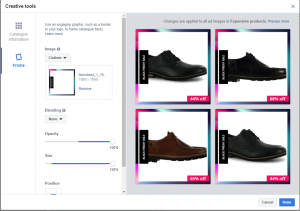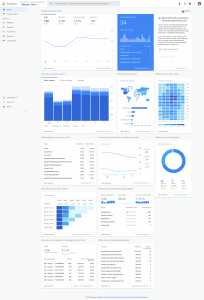How to Create a Competitive Advantage Through Software Development

Companies have been doing an increasingly good job of ensuring their software investments enhance their competitive advantages. Most businesses have moved past the “we need an app” stage. However, many leaders are still grabbing at the next big thing. For instance, you might hear, “We need blockchain,” or “Do we have machine learning capabilities?”
If innovation is a differentiator for your business, it’s obviously okay to experiment with different software solutions to accentuate your competitive advantage. However, for most, leading with technology is more akin to putting the cart before the horse.
You can’t use every emerging technology, nor should you. In fact, technology consultant Jeffrey Funk found that many recent artificial intelligence solutions aren’t as valuable as the hype suggests. If you want to enable the best facets of your operations and increase your business’s value, you need to focus your software development initiatives on impactful targets.
Finding the Real Differentiator
Trying to determine whether your competitive advantage is visible in your software investments? To start, you need to be explicit about your competitive advantage. Do you have it written down? Is that what’s expressed in reality? Would your customers agree?
Even though you might see yourself as an innovator in one area, it doesn’t matter if your customers disagree.
To them, you may be nothing more than a scale player with high switching costs. In that case, you either need to align your vision with reality or take the necessary steps to change perceptions.
Understanding Users’ Perceptions
Data can certainly help you understand where opinions fall. Software provides numerous data points that aren’t readily available in other business-enabling tools, so it behooves you to use them to evaluate whether your competitive advantages are coming through. For example, is customer service the differentiator? Does that resonate when you look at your self-service and support stats? What about network effects? How many hooks to other systems do you see per client?
Similarly, you can use some qualitative points to help determine whether your end-users feel the way you’d expect. It’s worth checking consumer sites and message boards relevant to your business to check sentiment around customer experience and service. Notwithstanding a few outliers, is it in line with your expectations? Once you understand your true strengths, you can explore technology initiatives that boost your competitive advantages.
Leveraging Software Development
Software development isn’t something to take lightly; it comes at a significant investment. However, it can offer many benefits to your business. With that in mind, here are a few tactics to ensure your software enables operations and increases your company’s value:
1. Build on Your Strengths.
Competitive advantages shrink over time due to the nature of the marketplace. As they pay off for you and boost your position, rivals will imitate you. All is not lost, however. One way to retain your advantage is to continue innovating on your core strengths. Internal- and external-facing software is the key to improving your value.
Remember that software development doesn’t happen overnight or all at once, so you’ll need to be selective when investing in technology.
Companies using technology to gain a competitive advantage often focus on a specific business area, such as customer relations or human resources, that they feel separates them from their peers. For instance, customer relationship management systems help centralize communications and provide the opportunity to gather customer knowledge. You can use these insights for segmentation purposes, then start delivering more personalized experiences.
Alternatively, you could consider investing in technology for HR. Software for this department can offer insights into your available staff, which improves the employee experience and supports retention efforts. Once you understand your core strengths, you can pick an area to support with a software solution.
2. Facilitate Customer Interactions.
Customers are increasingly seeking digital avenues to interact with your business. Should individuals experience issues or raise concerns, they’ll expect prompt responses. But not from chatbots and phone menus alone. If the problem is too complex for automation to handle, people want to connect seamlessly with real workers who can offer personalized assistance. Leaving this area of operations exclusively to digital touchpoints does nothing to further your customer engagement strategy.
Customer engagement software helps facilitate and centralize communications with customers. These solutions employ a variety of channels and touchpoints to enable customer interactions and provide a relevant end-to-end experience. With that solution in place, it becomes much easier to deploy conversational marketing, build a relatable social media presence, and deliver personalized messaging to your target audience.
If you’re still uncertain what your audience wants and needs, look to customer data.
You may also want to go directly to the source and seek feedback with surveys or questionnaires. For example, ask what customers think of your products and service offerings and uncover any friction points they might be experiencing.
3. Pay Attention to How Employees Use Tools.
Though this should go without saying, your employees anticipate digital tools to enhance their productivity and make their day-to-day responsibilities easier. If you don’t invest in technologies that enable your tasks, the lack of support becomes a workplace detractor. Sadly, many companies appear to be floundering on this front, particularly with communication tools. According to a Slack study, only 31% of workers say they are “extremely satisfied” with what’s available to them. More importantly, 71% expect more tools in the future.
To avoid a similar problem, plot out your current advantages. Then, follow up with a technology strategy that expands those advantages into the future. If you’re going the software development route, consider the user experience as well.
Workflow software should always meet the needs of your team, not just check an arbitrary box for operations.
Otherwise, the competitive advantage will be lost, and the software solution may even go unused in favor of homegrown workarounds.
4. Don’t Reinvent the Wheel.
No one would expect you to make a new word processor. Similarly, you shouldn’t be thinking about building a new internal instant messenger, unless it’s embedded in a suite of other tools and meets people where they work.
Be smart about what you can buy now versus build later.
Look at what you can configure with off-the-shelf commercial solutions to meet your business needs. Off-the-shelf software may be less agile, but it can be a short-term solution for today’s issues. Should your needs change, you can explore custom software opportunities.
The world is increasingly digital, but you shouldn’t invest in technology for technology’s sake. Instead, you should pursue software development initiatives that bolster your competitive advantage.
Image Credit: by Luke Peters; Unsplash; Thank you.
The post How to Create a Competitive Advantage Through Software Development appeared first on ReadWrite.
(27)







